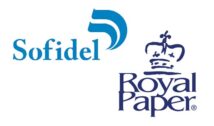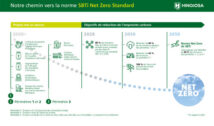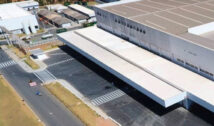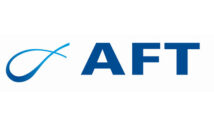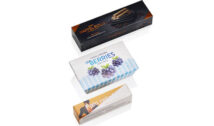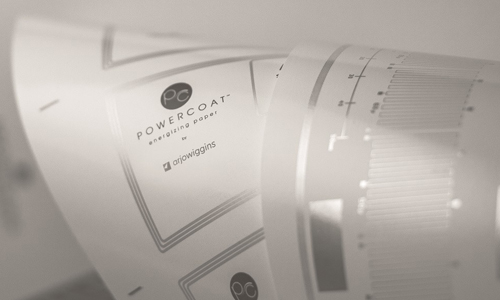
Arjowiggins has witnessed generations of progress in papermaking. Today, the company sees opportunities in the emerging market for printed electronics: electronic systems printed onto paper using electroactive polymers. Gaël Depres, R&D Manager at Arjowiggins Group , explains why.
What’s the connection between the paper and electronics industries?
Gaël Depres – It’s an opportunistic meeting of two worlds: Arjowiggins, best known for our retail stationery brand Conqueror, and printed electronics. This technology uses traditional printing methods such as screenprinting and flexography, but instead of graphic inks, you use conductive, insulating or active inks, to print electronic systems onto paper.
What can these systems do, and what applications do they have?
G.D. – We’re talking about smart packaging, NFC antennas for building entry passes, payment cards, and specialist inks for adding security to diplomatic and legal documents. The printed systems can transmit information to initiate actions, authenticate documents or check the status of objects.
What is the purpose of a sensor on packaging or a smart label?
G.D. – There are several possibilities. A thermal sensor can detect changes in the temperature of a package, a pressure sensor measures impacts that could damage its contents. These high-tech labelling systems can be used on valuable goods that require a high level of monitoring: impact sensors on fragile electronic items such as TV screens and computers, thermal sensors on pallets of food products, and so on. The market covers both retail and B2B.
How do these systems work?
G.D. – The smart label incorporates a sensor, an NFC antenna and a silicon chip. The sensor is made from polymers with piezoelectric properties. When pressure is applied to a material, it generates an electric current that corresponds to information being sent to the chip. The information is sent via the NFC antenna to an active reader – a smartphone, for example – where it’s made intelligible for the user (see inset).
So you are straddling traditional electronics and printed electronics?
G.D. – Absolutely. We are at the stage of hybrid electronics. Our pressure sensors use organic electroactive polymers and our NFC tags are made with metallic inks and traditional silicon chips.
What is innovative about these systems?
G.D. – We print them on PowerCoat©, which is Arjowiggins’ high-performance paper made for electronic printing. It’s super smooth, but also very “sealed”. This means it doesn’t absorb the conductive inks, which must remain on the surface and withstand the very high temperatures required for their application and functioning. Printed electronics represents a big leap forward — most RFID/NFC antennas are made from chemically-engraved aluminum incorporated into plastic.
So this procedure is more environmentally-friendly?
G.D. – That’s right. We are working actively on the recycling of our systems, drawing inspiration from technologies in our area of expertise, paper. Also, the production of electronics on paper consumes less energy than all-silicon electronics, and our systems are produced in Europe, whereas traditional NFC tags are mainly produced in China. These are important factors for Arjowiggins — we see this technology as a means of reducing the carbon footprint of our products.
Is this having an impact on interest in your products from manufacturers?
G.D. – Undoubtedly. The efficiency of the technology and its environmental advantages make our systems a promising source of growth for our business — especially as the production costs of hybrid organic and printed electronics are much lower than those for all-silicon electronics.
How does the collaboration between Arjowiggins and Arkema work?
G.D. – Arjowiggins and Arkema are working closely to develop the organic electronics industry. We are both active members of AFELIM, the French association of printed electronics, and we have a number of shared technical projects. SuperSmart is one example: a program funded by the European Institute of Innovation and Technology, led by Arkema. We are also working on pilot projects with the aim of using the chemicals group’s electroactive polymer materials in systems with our products.
What new uses lie ahead for printed electronics?
G.D. – There are many. Smart paper could, for example, be used as a biosensor in the form of a disposable biological test to detect a pathology, which could be very useful in a pandemic, such as the current Covid-19 crisis.
SPOTLIGHT – RFID/NFC: how does it work?
An offshoot of RFID technology, Near Field Communication (NFC) is a short-range wireless communications system. The NFC tag is made up of a chip and an antenna. It is a passive target that functions without wires or electricity. When placed near an active reader — one with an energy supply such as a phone or card reader — the antenna picks up its radio signal and uses its energy to drive the chip, and information is exchanged in under a second. NFC can be used in security passes to access buildings or transport terminals, to pair two electronic devices such as a smartphone and a wireless speaker, and in contactless payment cards.

















